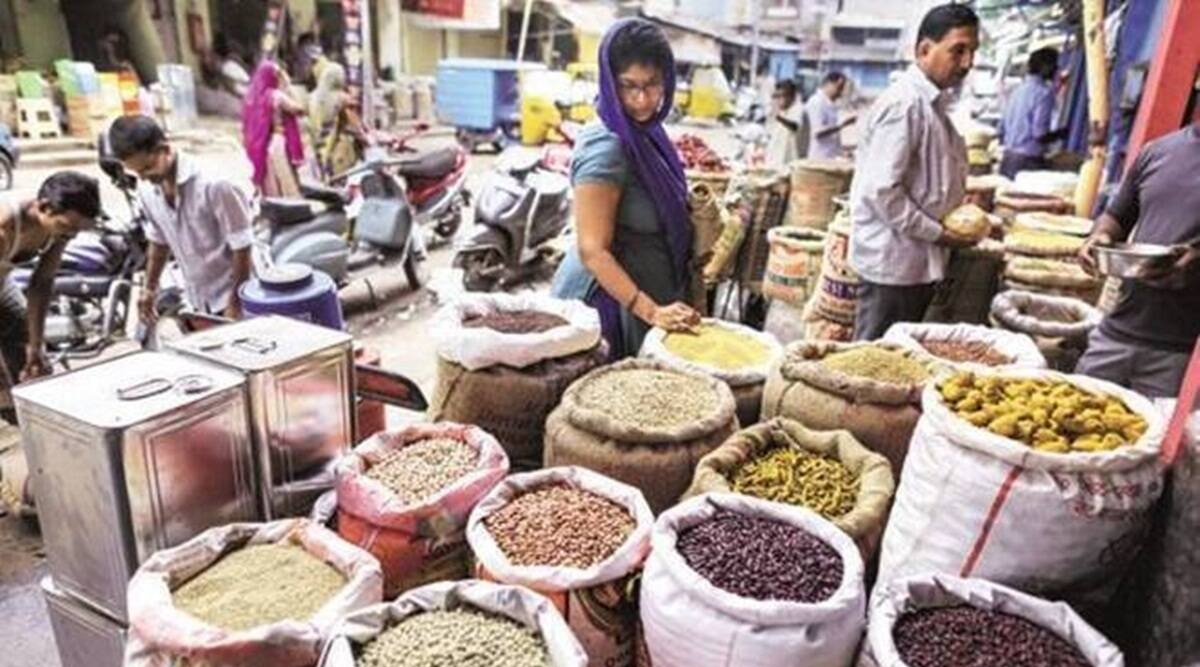 Industrial output rose by 29.3 per cent in May, mainly because of a low base effect due to 33.4 per cent contraction in the same period last year, according to a separate set of data released by NSO.
Industrial output rose by 29.3 per cent in May, mainly because of a low base effect due to 33.4 per cent contraction in the same period last year, according to a separate set of data released by NSO. STAYING ABOVE the Reserve Bank of India’s (RBI) upper target of 6 per cent for the second consecutive month, retail inflation based on Consumer Price Index came in at 6.26 per cent for June, according to data released by the National Statistical Office (NSO) Monday.
Though the inflation print for June was slightly lower than estimates and the six-month high of 6.30 per cent seen in May, inflation rates for food and fuel recorded an increase.
Industrial output rose by 29.3 per cent in May, mainly because of a low base effect due to 33.4 per cent contraction in the same period last year, according to a separate set of data released by NSO. Last year, industrial activity was mostly disrupted due to the nationwide Covid lockdown.
The food inflation component of retail inflation rose to 5.15 per cent in June from 5.01 per cent in May, while fuel inflation rose to 12.68 per cent in June from 11.58 per cent in May. Core inflation — the non-food, non-fuel component — came in at 6.2 per cent in June as against 6.4 per cent in May.
With the second month of retail inflation breaching the inflation target of 4 +/-2 per cent set by the RBI, it is expected that the central bank will revise upwards its inflation forecasts. The RBI is unlikely to change its accommodative stance to maintain the tightrope walk in balancing the growth-inflation dynamics in the upcoming policy review on August 4-6.
“In our view, the tussle between supporting the nascent, incomplete revival in growth and preserving the anchoring of inflationary expectations will continue. The individual MPC members may have a varying tolerance for inflation that persists above the 6% target beyond a quarter, during the revival phase. If the CPI inflation remains entrenched above the 6% upper threshold in the next two prints (July-August 2021), a preponement of rate normalisation can’t be ruled out,” Aditi Nayar, Chief Economist, ICRA Ltd said.
Impact of lockdown on IIP
It’s for the second consecutive month that consumer level inflation continues to be above the RBI’s comfort band. When it comes to IIP, the base effect of the national lockdown last year is largely reflective in the 29.3 per cent year-on-year growth registered in May 2021.
The RBI, which primarily focuses on retail inflation while deliberating on its monetary policy, had left the key interest rate unchanged last month. It has projected CPI inflation at 5.1 per cent during 2021-22: 5.2 in Q1; 5.4 in Q2; 4.7 in Q3; and 5.3 in Q4.
Among the sectors for industrial output, the manufacturing sector, which accounts for over three-fourth of the total weight of the IIP, rose by 34.5 per cent in May as against 37.8 per cent contraction last year. Electricity output was up 7.5 per cent from 14.9 per cent contraction in May 2020, while mining grew 23.3 per cent as against 20.4 per cent contraction last year. Cumulatively, IIP for April-May has grown 68.8 per cent as against 45 per cent contraction in the same period last year.
The industrial output in May 2021 is 86.9 per cent of February 2020 and even lower than April 2021. The factory output in April 2021 was 94.3 per cent of February 2020 level. “This clearly shows that some of the grounds that industrial output had covered till March 2021 has been lost due to the impact of Covid 2.0 related regional /partial lockdown imposed in the different parts of the country,” Sunil Kumar Sinha, Principal Economist, India Ratings, said.
At broad-based classification, manufacturing, electricity and mining output came in at 84.6 per cent, 105.3 per cent and 87.6 per cent of the pre-Covid period. Primary, capital, intermediate, infrastructure, durable and non-durable goods output in May 2021 was 93.7 per cent, 67.4 per cent, 89.1 per cent, 89.5 per cent, 67.1 per cent and 88.9 per cent of the pre COVID 19 level.
“Clearly, Covid 2.0 is a setback for the industrial output which had surpassed the pre Covid-19 level both at the aggregate as also at the use based classification level in March 2021. Clearly, FY22 has not begun on an encouraging note despite the fact that during Covid 2.0 lockdowns industries were allowed to remain operational with Covid protocols/ lower employee headcounts,” Sinha said.
“It is still early months of FY22 and there is still time left to cover up the lost ground on the industrial front. Whether this will happen or not is difficult to say, but encouraging signs have emerged on the exports front with global trade showing momentum,” Sinha said.
- The Indian Express website has been rated GREEN for its credibility and trustworthiness by Newsguard, a global service that rates news sources for their journalistic standards.

